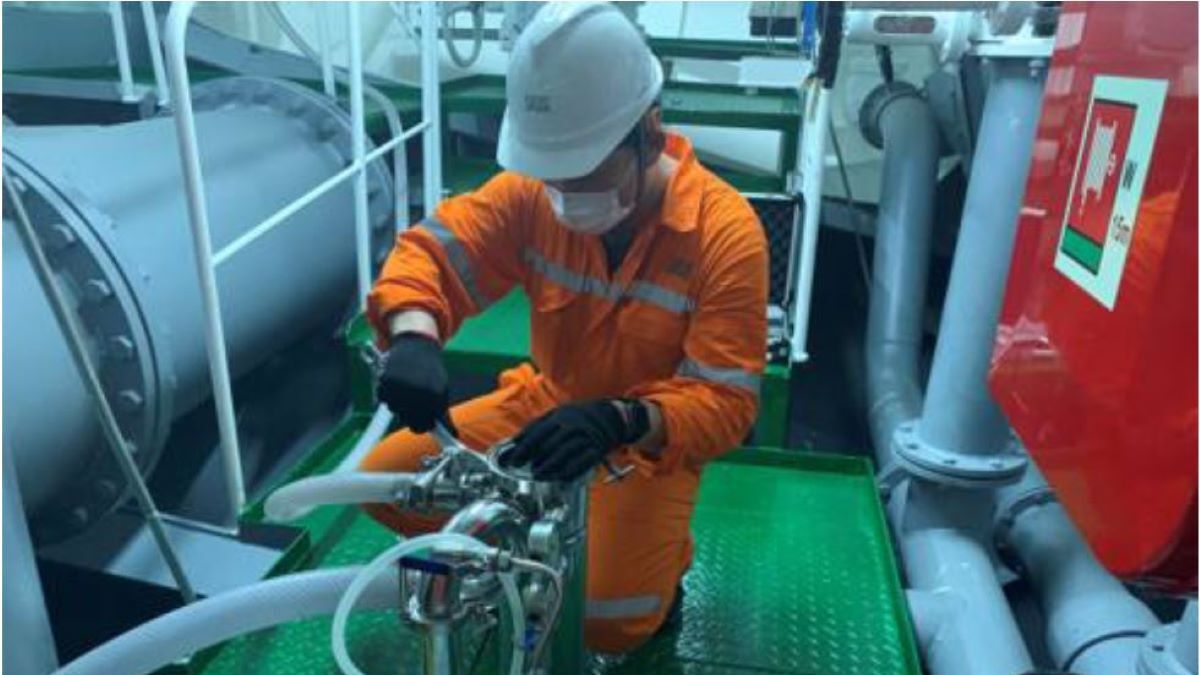Business Sectors
Events
Contents
Register to read more articles.
USCG to evaluate stringent ballast water testing
The US Coast Guard launches an Environmental Impact Statement to assess ballast water management systems’ testing methods, stressing stringent standards for invasive species prevention
The US Coast Guard (USCG) is preparing a Programmatic Environmental Impact Statement (PEIS) to evaluate the testing methods used for the approval of ballast water management systems (BWMS). This move reflects the USCG’s ongoing commitment to ensuring BWMS effectively prevent the spread of invasive species in US waters, a critical concern for environmental protection.
The decision follows the USCG’s 2022 policy letter, which established testing methods that diverge from those recommended by the International Maritime Organization (IMO), sparking considerable discussion within the ballast water industry.
The difference between the USCG and IMO standards has been a point of contention. While IMO provides international guidelines for BWMS testing, aimed at standardising practices globally, the USCG has opted for more stringent requirements tailored to the unique environmental conditions of US waters.
"The Coast Guard notes that nothing in VIDA nor its legislative history indicates Congressional intent to align domestic BWMS regulations with the IMO Ballast Water Management Convention," the USCG stated, highlighting the legislative backing for its approach.
The USCG’s focus on more rigorous testing protocols stems from its emphasis on protecting the diverse and sensitive ecosystems found in US waters, where invasive species pose a particular threat.
The issue of co-ordination between the USCG and the Environmental Protection Agency (EPA) in developing BWMS testing methods has also been addressed in the PEIS.
The Coast Guard received a comment questioning whether it had adequately co-ordinated with the EPA before concluding that no viability testing methods were available. In response, the USCG clarified its position, stating, "We appreciate the question and would again like to emphasise that we did not mean to suggest or imply in the draft policy letter that there are no available viability testing methods, but rather we have not evaluated the science supporting any viability testing methods within a best available science evaluative framework."
Furthermore, the USCG confirmed it had indeed co-ordinated with the EPA when drafting the policy letter.
"The Coast Guard received the EPA’s input on the draft policy letter and integrated that input into the draft policy letter prior to its publication in the Federal Register," the agency noted. This collaboration underscores the USCG commitment to working closely with other federal agencies to ensure its policies are scientifically sound and aligned with broader environmental protection goals.
The PEIS process will continue to involve such inter-agency co-ordination, ensuring the Coast Guard’s testing methods are informed by the best available science and federal expertise.
The USCG also addressed concerns raised regarding the applicability of the ’best available science’ requirement in its draft policy letter. Some commenters asserted the USCG did not base its draft policy on the best available science, with one commenter specifically arguing the Coast Guard misinterpreted the statutory directive by issuing a draft policy letter ’not based on best available science’ and failing to discuss what constitutes the best available science.
In response, the USCG clarified its interpretation of the statutory requirements under 33 U.S.C. 1322(p)(6)(D)(ii) and (iv), which mandate the Coast Guard’s acceptance of viability testing methods must be ’based on the best available science.’
The USCG stressed the draft policy letter was intended to solicit public comment on the proposed process for accepting and using new testing methods, an approach that requires evaluating viability testing methods within a best available science framework. This evaluative process is central to ensuring any new methods adopted are scientifically sound and effective in protecting US waters.
The PEIS will play a crucial role in assessing whether the current USCG testing methods are sufficient to safeguard the environment. The statement will comprehensively examine the environmental impacts of these methods, considering potential alternatives or modifications that could enhance their effectiveness.
This process will involve a detailed evaluation of both existing practices and possible future amendments, taking into account the cumulative impacts of BWMS operations on the marine environment over time.
The USCG’s decision to prepare a PEIS underscores its determination to protect US waters from the risks associated with invasive species.
Despite the concerns raised by international stakeholders, the USCG remains steadfast in its view that rigorous standards are essential for environmental protection.
Stakeholders are encouraged to participate in the PEIS process, providing feedback that could help shape the future of BWMS testing protocols in the United States.
Comments on the proposed testing methods can be submitted directly through the Federal Register. Interested parties can post their feedback at the following link.
Riviera’s Ballast Water Webinar Week will be held 14 October 2024. Click here to register for this free-to-attend event.
Related to this Story
Women in Maritime Today: Elin Saltkjel says no day working in maritime is dull
Events
Maritime Environmental Protection Webinar Week
Cyber & Vessel Security Webinar Week
The illusion of safety: what we're getting wrong about crews, tech, and fatigue
Responsible Ship Recycling Forum 2025
© 2024 Riviera Maritime Media Ltd.














